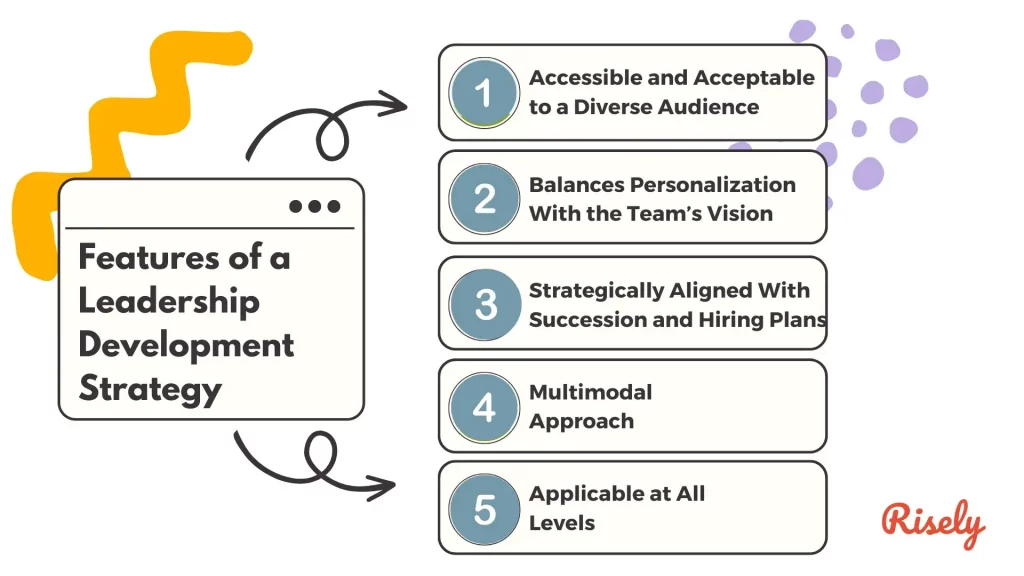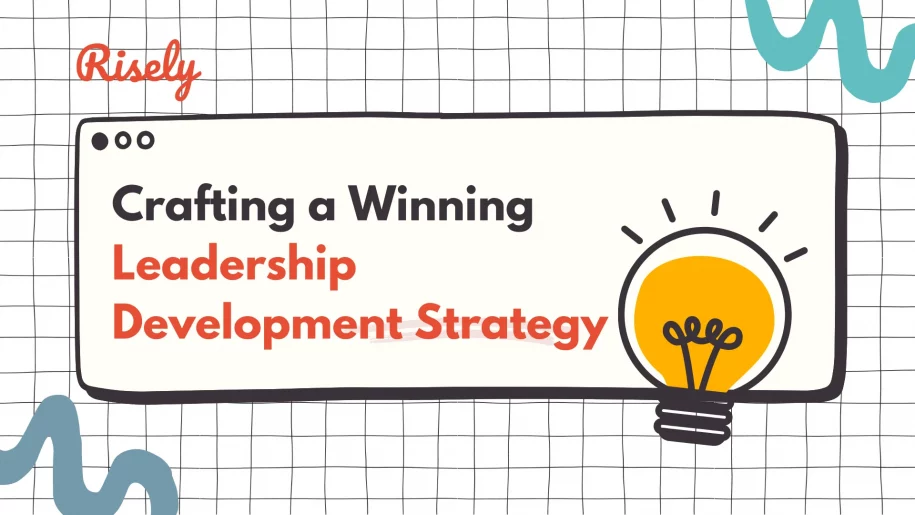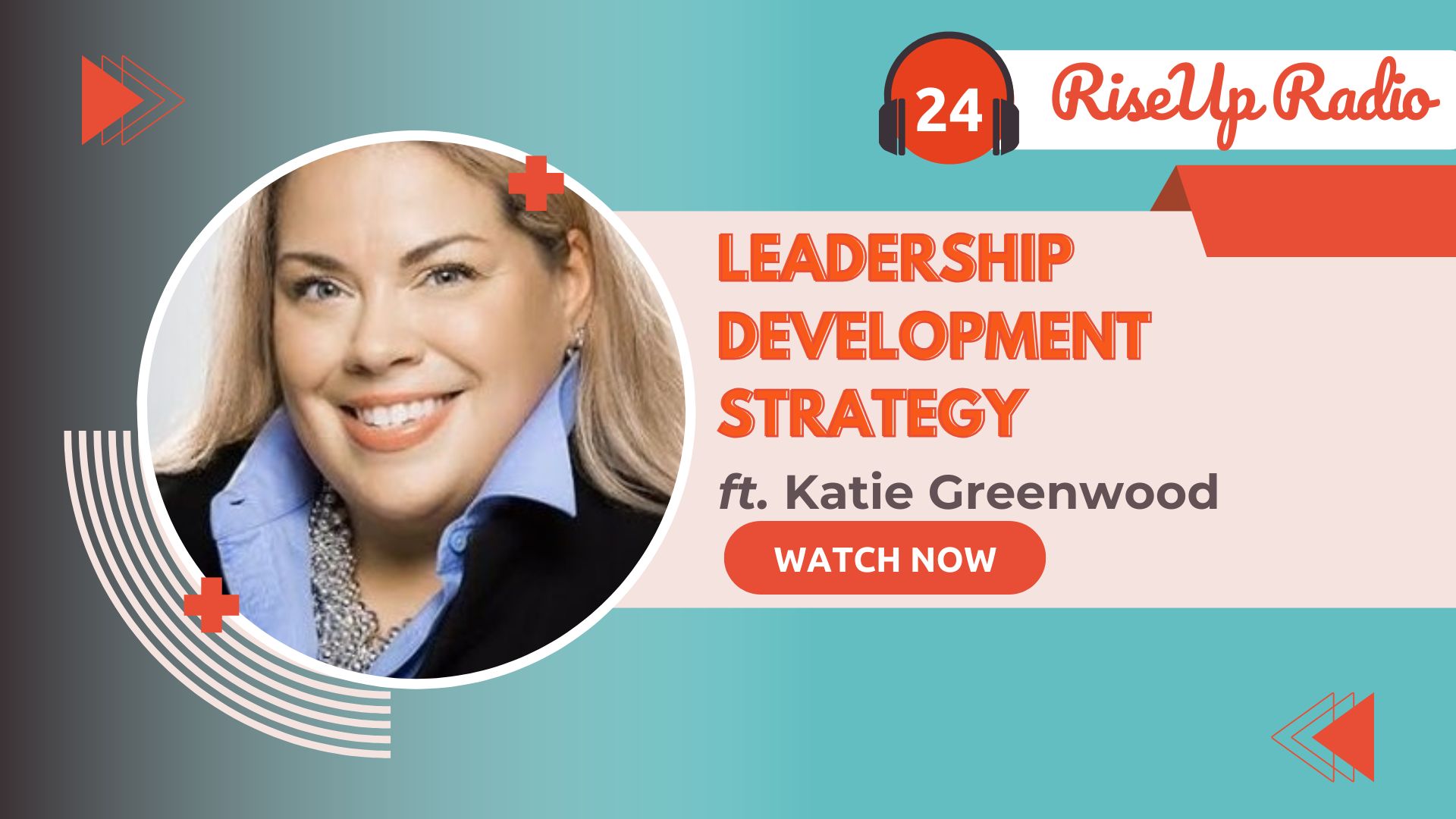Crafting a Winning Leadership Development Strategy
A successful leadership development strategy is essential for organizations striving for growth, innovation, and success. In today’s business landscape, effective leadership development programs are critical for fostering the skills, competencies, and behaviors necessary for leaders at all levels of an organization. By investing in leadership development, businesses can enhance employee engagement, drive company culture, and gain a competitive advantage in the market. A strategy ties it all together, but how do you develop a good one? Let’s figure out.- Crafting a Winning Leadership Development Strategy
- What’s even Leadership Development?
- What happens when L&D has no strategy for this?
- The Pillars of an Effective Leadership Development Strategy
- Setting Up Your Leadership Development Strategy
- The Framework for Developing Leadership Strategies
- Maximizing the Impact of Your Leadership Development Program
- Conclusion
- Other Related Blogs
What’s even Leadership Development?
Leadership development is a dynamic process of continuous improvement that focuses on honing leadership skills, competencies, and styles. It is about personal development and building effective leaders who can navigate complex business challenges and drive success. A modern leadership development perspective emphasizes adaptability, innovation, and the ability to lead in diverse contexts. It equips individuals with the necessary skills and knowledge to lead effectively, inspire teams, and achieve organizational goals.The criticality of Leadership Development in today’s business landscape
Effective leadership development is critical for organizations to thrive and overcome challenges in today’s rapidly evolving business landscape. Think about it simply: if your team’s leaders cannot set expectations or actively listen to the issues employees face, are you likely to succeed? Such leadership skills are vital in developing business leaders who can drive innovation, adapt to change, and navigate complex business environments. For L&D leaders, it is imperative to think of this before the symptoms become full-blown issues with organization-wide impact.What happens when L&D has no strategy for this?
Without a clear leadership development strategy, learning and development efforts lack direction, focus, and effectiveness. While some of your leaders could be very motivated and take up learning on their own, others would need guidance and are struck by the sheer number of choices available on the internet. And yet, there could be more leaders who need help understanding exactly where they need help. To tie it all up, leaders and their development are a concern for the organization that’s planning its future journeys. Independent and unaligned paths would hardly suit your vision or needs. Hence, without a leadership development strategy, a lot of tension can become our buddy! That sounds terrible, but before jumping onto the solutions, let’s look at some signs that your leadership development strategy needs a revamp.Signs that your team is missing a leadership development strategy
- There is no shared understanding of what good leadership entails. There is little that managers can refer to when they are stuck.
- Managers and leaders feel that their professional development is not prioritized. As a result, there’s a disconnect and higher turnover.
- Poor performance and productivity of teams due to lack of guidance and support from the managers.
- Inability to adapt to changes in the industry or market as the leadership is stuck with older ideas.
The Pillars of an Effective Leadership Development Strategy
Crafting an effective leadership development strategy involves identifying key pillars that form the foundation of the program. These pillars ensure the strategy is accessible, personalized, and aligned with the organization’s vision, succession planning, and talent development needs. By incorporating these pillars, you can create comprehensive leadership development programs that benefit leaders at all levels of the organization.
Accessible and Acceptable to a Diverse Audience
An effective leadership development strategy should be accessible and acceptable to a diverse audience. It should consider the varied contexts, backgrounds, and needs of individuals within the organization. By adopting an inclusive approach, organizations can create leadership development programs that cater to diverse leadership styles, perspectives, and experiences. Inclusive leadership development strategies encourage employee engagement, foster a culture of belonging, and enhance leadership effectiveness. It recognizes and values each individual’s unique strengths and contributions, fostering a sense of inclusion, belonging, and employee engagement through training.Balances Personalization With the Organizational Vision
A successful leadership development strategy personalizes goals while aligning them with the organization’s vision, values, and business strategy. It ensures that leaders have the skills, competencies, and behaviors necessary to drive success while embodying the company’s culture and values. Organizations should create opportunities that resonate with leaders’ aspirations, preferences, and learning styles by tailoring leadership development plans to individual needs, as they are likely to find them much more relatable and valuable that way. Personalization enhances engagement, motivation, and retention, as leaders feel invested in their growth and development.Strategically Aligned With Succession and Hiring Plans
A vital aspect of an effective leadership development strategy is aligning it strategically with succession planning and talent development efforts. Considering the organization’s future leadership needs, you can groom and prepare leaders for senior leadership roles, ensuring a smooth leadership transition and continuity in business operations. Similarly, by keeping the leadership development strategy robust, you can ensure that you are hiring people only for the areas you need. At the same time, some other capabilities can be groomed and built within the existing team members. Read more: How Succession Planning And Leadership Development Go Hand-in-Hand With 5 ExamplesMultimodal Approach
An effective leadership development strategy incorporates a multimodal approach, recognizing that individuals have different learning styles and preferences. There are several ways to approach leadership development:- leadership training programs
- coaching
- mentorship
- experiential learning
Applicable at All Levels
A successful leadership development strategy should apply to leaders at all levels of the organization, from entry-level to senior leadership positions. It recognizes that leadership development is crucial for team members in management roles, emerging leaders, and even senior leaders who continuously evolve their leadership skills. It becomes super important when we recognize the fact that frontline managers are the ones who interact the most with employees. Yet, they remain out of the scope of most development initiatives. Leadership development programs should span various leadership levels, incorporating different developmental needs, competencies, and skill sets required at each level. By providing development opportunities for leaders at all levels, organizations can create a pipeline of competent leaders who are well-equipped to navigate future challenges, drive success, and inspire their teams.Other Interesting Reads
Setting Up Your Leadership Development Strategy
“Strategy” sounds like a heavy word, but fret not! You can effectively develop a winning leadership development strategy for your team by keeping the essential ideas listed above in mind. Before everything else, you must establish a clear plan and set up some basics. This section will outline key considerations for introducing a successful strategy, including aligning leadership approaches with vision and values, identifying key stakeholders, addressing common challenges, and creating cultural changes alongside development efforts. So, let’s hop right on.Alignment of the leadership approach with vision and values
Aligning leadership approaches with the organization’s vision and values is essential for effective leadership development. Leadership style is critical in shaping company culture, employee engagement, and overall success. Hence, before you craft a leadership development strategy for your team, consider what leadership and leadership development stand for. Defining your team’s values, leadership vision, and competency framework sets the goals for the leadership development strategy to work toward.Identifying key stakeholders in the process
Identifying key stakeholders in the leadership development process ensures collaboration, support, and successful implementation of the strategy. Essential stakeholders include leaders, HR, employees, and change management teams. By involving key stakeholders, you can gain valuable insights, ensure buy-in for training, and create a culture of positive change. Moreover, their support is essential to ensure that your efforts bear fruit.Build a murder board
Building a murder board is like playing the devil’s advocate. Before presenting and implementing your plan, set up a meeting where you critically analyze and scrutinize every aspect of your leadership development strategy. Rigorously question and challenge the assumptions, logic, and feasibility of the plan. The goal is to expose any potential shortcomings or risks that could undermine the success of the mission or operation. For instance, you might have assumed that managers would like your idea of an hour-long class after office hours, but what if they hate sticking around for an hour more? That’s just the tip of the iceberg; there are many more issues that you can see once you look at them with a minute lens. You can modify and adjust your strategy around such concerns after this exercise. Read more: Finding The Missing Pieces: What Makes Leadership Training SuccessfulThink of the cultural changes to make alongside
Introducing cultural changes alongside leadership development efforts is crucial for success. A supportive company culture enhances employee engagement, fosters a sense of belonging, and promotes effective leadership development. On the other hand, if your organization’s culture is not prepared to handle and implement a new vision of leadership development, your strategy is bound to get stuck at every step possible. Primarily, cultural changes are not always about agreeing to learn. They are more about embracing new insights and adopting them quickly as they come.The Framework for Developing Leadership Strategies
A well-defined framework provides structure and guidance for developing effective leadership strategies. In this section, we will explore the vital elements of a leadership development framework, including defining leadership competencies, assessing development needs, identifying available resources, and incorporating leadership maturity and strategy integration.Define leadership for your organization with competencies
Defining leadership for your organization involves identifying the critical competencies required for effective leadership. These competencies are a foundation for leadership assessment, development, and succession planning. An example of a competency framework is communication, strategic thinking, decision-making, and team management skills.Assess needs and outline areas you need to work in
Assessing development needs is essential for creating effective leadership strategies. By understanding the organization’s current and future business needs, leaders can identify areas that require development and design appropriate training programs, coaching, and mentoring opportunities. Strategic planning enables leaders to prioritize development efforts based on business objectives and goals. P.S. Risely’s leadership skill assessments can help you out here, check out some for free!List available, acceptable, and accessible resources
Listing available, acceptable, and accessible resources facilitates the successful implementation of leadership development strategies. These resources include leadership training programs, professional development opportunities, coaching, mentoring programs, and support systems. Providing a range of resources ensures leaders have access to the tools and support necessary for their development. While doing this, keep your resource constraints (financial as well as temporal) in mind!Incorporate leadership maturity into your strategy
Integrating leadership maturity into the strategy recognizes that leadership development is a journey, and leaders progress through different growth stages. By understanding and incorporating leadership maturity, you can tailor development strategies to meet leaders’ evolving needs, provide appropriate challenges, and support ongoing growth and development.Fit the strategy into daily business operations
Integrating the leadership development strategy into daily business operations ensures its effectiveness and sustainability. Leaders can seamlessly incorporate new skills, behaviors, and mindsets into their roles by aligning development efforts with daily workflows. This integration enhances leadership effectiveness, drives organizational success, and supports a culture of continuous development.Maximizing the Impact of Your Leadership Development Program
To maximize the impact of a leadership development program, organizations must consider critical strategies, including creating learning opportunities around moments of need, effective communication, embracing the cycle of trial and error, and collecting and implementing feedback.Creating learning opportunities around moments of need
Creating learning opportunities that align with moments of need helps leaders acquire and apply knowledge and skills more effectively. Just-in-time training, on-demand resources, and targeted development opportunities close skills gaps facilitate mastery and enhance leadership capabilities. The best thing about such opportunities is that the need is visible to the candidate. Hence, they are ready to learn while having a chance to apply and test their learning.Communicating ‘the why’ to inspire and motivate
Clear communication of the leadership development program’s purpose, goals, and benefits inspires and motivates leaders by articulating “the why” behind the program. Leaders are more likely to be engaged, committed, and encouraged to participate actively in development efforts when they see where the plan leads. Instead of relying solely on your organizational leadership development strategy, collaborating with managers to understand their goals and tying both together will help you make a difference.Embracing the cycle of trial and error in strategy development
Embracing the cycle of trial and error promotes continuous improvement in leadership development strategies. Organizations can refine and enhance the strategy over time by experimenting, learning from failures, and making necessary adjustments. This iterative approach lets you identify what works best for needs, teams, and organizational goals, driving long-term success.Think feedback
Collecting and implementing feedback is crucial for the success of a leadership development program. It enables organizations to evaluate program effectiveness, gather insights, and make necessary improvements. Analyze feedback to identify trends, areas of improvement, and success stories, and make data-driven decisions to enhance the program continuously. Consider the following approaches to collect feedback:- Conduct regular performance reviews to gather feedback on leaders’ development progress.
- Encourage leaders to seek feedback from their teams, peers, and mentors for self-improvement.
- Utilize employee surveys and engagement surveys to gather feedback on leadership development initiatives.
- Incorporate feedback mechanisms like focus groups or suggestion boxes to gather input on program improvements.
Join hands with Risely
Collaborating with Risely, an innovator in the leadership development space, offers unique opportunities for organizations to enhance their leadership development programs. Risely focuses on creating development opportunities that suit the manager’s needs and work in their context. By partnering with Risely, you can experience growth through microlearning and support from an A.I. coach, Merlin. Want to check out how it works? Set up a free 14-day trial hereConclusion
Crafting a winning leadership development strategy requires careful consideration and alignment with your organizational vision. Setting up your leadership development strategy involves aligning your leadership approach with company values, identifying key stakeholders, and preparing for potential challenges. Cultural changes may also be necessary to support the implementation of your strategy. To maximize the impact of your leadership development program, communicate the purpose and benefits of the program to inspire and motivate participants and embrace the cycle of trial and error for continuous improvement. In conclusion, a well-crafted leadership development strategy is essential for nurturing and growing influential leaders within your organization.Ace performance reviews with strong feedback skills.
Master the art of constructive feedback by reviewing your skills with a free assessment now.
Other Related Blogs
Building an Ultimate Leadership Development Action Plan
How to Build a Leadership Development Action Plan? Having a strong Leadership Development Action Plan is more critical than ever in today’s evolving business world. Whether you’re looking to drive…
Leadership Journey Examples on the RiseUp Radio Podcast
Leadership Journey Examples on the RiseUp Radio Podcast Leadership isn’t a destination – it’s a journey filled with twists, turns, and transformative moments that shape not just careers, but entire…
What is Immersive Learning? A New Era in Education
In this blog, you’ll learn what is immersive learning and how it is changing training, increasing engagement, and influencing the future of workforce development. … Read More
What are Learning Designs? All You Need To Know
This blog explains what learning designs are in depth while also covering it’s key components. It tells you about the process involved in creating a good learning design along with…


